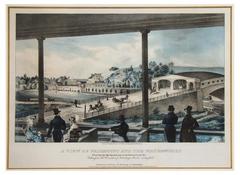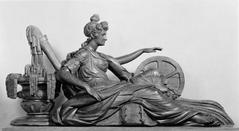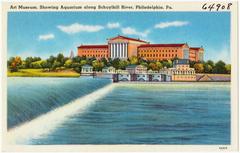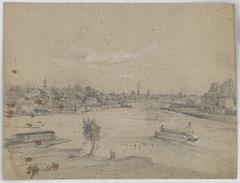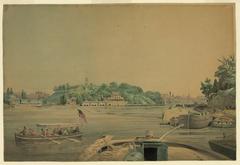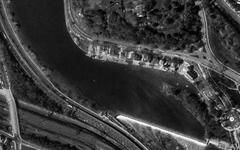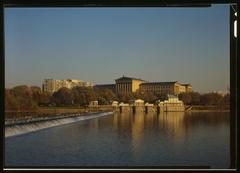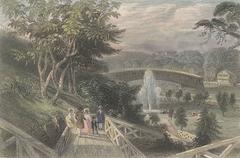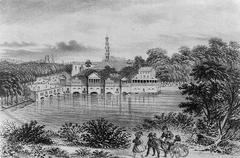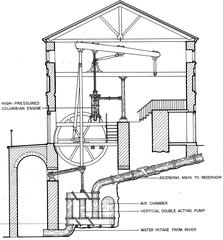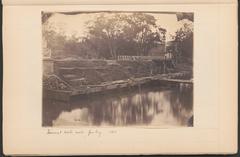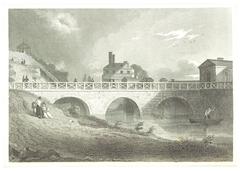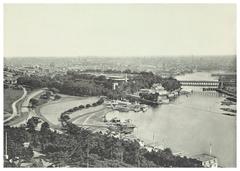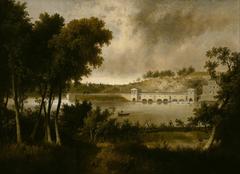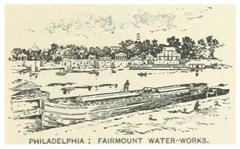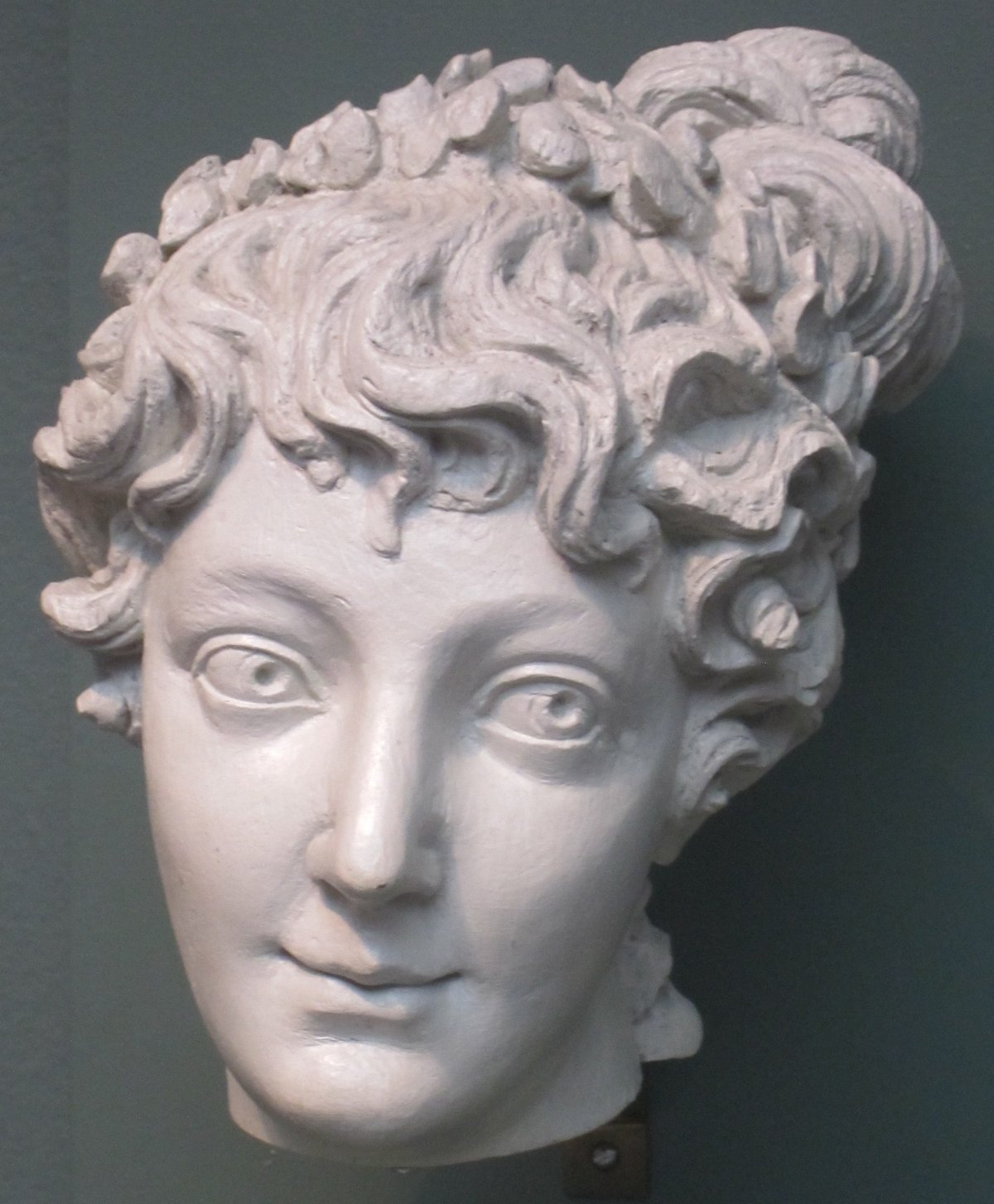
Fairmount Water Works Visiting Hours, Tickets, and Philadelphia Historical Sites Guide
Date: 15/06/2025
Introduction
Nestled along the picturesque banks of the Schuylkill River, the Fairmount Water Works stands as a remarkable symbol of Philadelphia’s commitment to public health, engineering innovation, and environmental stewardship. Established in the early 19th century as the nation’s first large-scale municipal water supply system, it revolutionized urban infrastructure and public health in Philadelphia, setting a precedent for cities across the United States. Known for its elegant Greek Revival and neoclassical architecture, the Water Works harmoniously blends utility with civic beauty.
Today, Fairmount Water Works operates as an interpretive center and environmental education hub. Visitors can explore interactive exhibits, historic machinery, and enjoy engaging programs for all ages. Its proximity to other major city landmarks like the Philadelphia Museum of Art and Boathouse Row, along with convenient public transit access, makes it an ideal addition to any Philadelphia itinerary.
This comprehensive guide covers the Water Works’ history, architecture, cultural impact, and essential visitor information—including current visiting hours, ticketing, accessibility, and nearby attractions. For official updates, visit the Fairmount Water Works official website and refer to reputable sources such as the American Society of Civil Engineers.
Contents
- Introduction
- Early Water Supply Challenges in Philadelphia
- Construction and Origins of Fairmount Water Works
- Architectural and Engineering Significance
- Impact on Urban Development
- Decline and Adaptive Reuse
- Modern Restoration and Community Engagement
- Visiting Hours, Ticketing, and Accessibility
- Special Events, Tours, and Photo Opportunities
- Visuals and Interactive Media
- Related Philadelphia Historical Sites
- Frequently Asked Questions (FAQ)
- Summary and Visitor Recommendations
- Sources
Early Water Supply Challenges in Philadelphia
In the late 18th and early 19th centuries, Philadelphia’s water supply relied on a patchwork of public and private wells, often contaminated by proximity to privy pits. These conditions led to outbreaks of waterborne diseases and widespread public concern (ASCE). Benjamin Franklin advocated for a gravity-driven aqueduct from Wissahickon Creek, but only as the city’s population outgrew these rudimentary systems did officials pursue a municipal solution.
Construction and Origins of Fairmount Water Works
Recognizing the urgent need for a reliable water supply, city engineers selected the Schuylkill River as the source. Under the leadership of Frederick Graff, construction began in 1812 at the base of Faire Mount. The original infrastructure, completed in 1815, included a pump house that lifted river water to a reservoir atop the hill—now home to the Philadelphia Museum of Art (Billy Penn). The project was partly funded through the sale of water shares and offered free public hydrants as a civic benefit.
Architectural and Engineering Significance
Design and Style
Fairmount Water Works is a masterpiece of Greek Revival civic architecture, conceived by Frederick Graff. Its temple-like pump houses, Doric columns, and colonnaded facades were designed to elevate utility to monumentality, masking industrial functions behind elegant forms (Philadelphia Beautiful; Lonely Planet). White marble, symmetrical pavilions, and riverfront terraces made the Water Works a focal point of Philadelphia’s landscape (pabook.libraries.psu.edu).
Engineering Innovations
The Water Works pioneered the use of paddle wheels (later Jonval turbines) for municipal water pumping, a breakthrough in American engineering (Wikipedia). The system included a 3-million-gallon reservoir, steam engines, and a dam channeling water into the mill house (Philadelphia Beautiful). Transitioning to water wheels in 1822 reduced operational costs and noise, and by the 1840s, eight wheels provided more than 5 million gallons of water daily (pabook.libraries.psu.edu).
Integration with Landscape
Formal gardens, walking paths, and gazebos transformed the utilitarian complex into a public destination. This fusion of architecture, engineering, and landscape design inspired future park systems and elevated the Water Works’ reputation as both a civic utility and a recreational haven (pabook.libraries.psu.edu).
Impact on Urban Development
The Fairmount Water Works was the first major municipal water supply system in the United States, setting a model for urban infrastructure (ASCE). Its creation spurred the expansion of Fairmount Park and the establishment of the Fairmount Park Commission in 1855, ensuring the protection of the city’s water source and green spaces (Billy Penn).
The Water Works also became a global attraction, drawing praise from figures like Charles Dickens and Mark Twain, who admired its technological and aesthetic achievements (Billy Penn).
Decline and Adaptive Reuse
By the late 19th century, industrial pollution and advances in water treatment rendered the Water Works obsolete. It ceased operation in 1909 and was later repurposed as the Philadelphia Aquarium (1911-1962), one of the nation’s earliest public aquariums. Following periods of neglect and limited use, restoration efforts began in earnest in the late 20th century (Billy Penn).
Modern Restoration and Community Engagement
Designated a National Historic Landmark in 1976 and a Historic Civil Engineering Landmark a year earlier, the Water Works underwent significant restoration. In 2003, it reopened as the Fairmount Water Works Interpretive Center, dedicated to environmental education and urban watershed awareness (ASCE; Billy Penn; Schuylkill Banks).
The center features interactive exhibits, a demonstration mussel hatchery, hands-on workshops, and temporary art installations (Water Museums Network). Community partnerships support river clean-ups, educational outreach, and environmental stewardship (6ABC).
Visiting Hours, Ticketing, and Accessibility
- Visiting Hours: The interpretive center is generally open Wednesday through Sunday, 11:00 AM to 5:00 PM. Hours may vary seasonally or for special events—check the official website for updates.
- Tickets: Admission is typically free. Select events, workshops, or tours may require tickets or reservations.
- Accessibility: The site is ADA-accessible, with ramps, elevators, and accessible restrooms.
- Location: 640 Waterworks Drive, Philadelphia, PA 19130. Accessible by public transit, bike, or car (limited parking).
Special Events, Tours, and Photographic Spots
- Guided Tours: Scheduled tours are available, providing insight into the site’s history, architecture, and environmental mission.
- Events: Regular programming includes speaker series, family activities, art installations, and riverfront festivals (Preservation Alliance).
- Photo Opportunities: The riverside setting, historic facades, and landscaped gardens offer outstanding photographic backdrops.
Visuals and Interactive Media
Explore high-quality images, virtual tours, and interactive maps on the official Fairmount Water Works website. When sharing your visit online, use descriptive alt tags like “Fairmount Water Works historic site in Philadelphia” or “Greek Revival architecture at Fairmount Water Works.”
Related Philadelphia Historical Sites
Enhance your trip by visiting nearby sites:
- Philadelphia Museum of Art: Iconic museum and home of the “Rocky Steps.”
- Boathouse Row: Historic boathouses, beautifully illuminated at night.
- Fairmount Park: Expansive urban park with trails and recreation opportunities (Philadelphia Beautiful).
- Smith Memorial Playground & Playhouse: Family-friendly attraction (Discover PHL).
For more on Philadelphia’s historical landmarks, see our related posts.
Frequently Asked Questions (FAQ)
Q: What are Fairmount Water Works visiting hours?
A: Generally Wednesday to Sunday, 11:00 AM to 5:00 PM. Confirm on the official website.
Q: Is there an admission fee?
A: Admission is usually free; special events may require tickets.
Q: Are guided tours available?
A: Yes. Check availability in advance.
Q: Is the site accessible for people with disabilities?
A: Yes, the site is ADA-accessible.
Q: Can I combine my visit with other attractions?
A: Yes, the Water Works is adjacent to the Philadelphia Museum of Art and Boathouse Row.
Q: Is parking available?
A: Limited parking is available; public transit and biking are recommended.
Q: Are pets allowed?
A: Pets are permitted in outdoor areas on a leash; not inside the interpretive center.
Summary of Key Points and Visitor Recommendations
Fairmount Water Works exemplifies early American innovation in public infrastructure and remains a beacon of architectural elegance and civic pride. Its transformation from a municipal water supply system to an environmental education hub reflects Philadelphia’s continued commitment to sustainability and community engagement. With free admission, accessible facilities, and a wealth of interactive exhibits, it is an enriching destination for visitors of all backgrounds.
Before visiting, check the latest hours and event details on the official website. Consider guided tours for an in-depth experience and explore nearby historical sites to immerse yourself in Philadelphia’s vibrant heritage. Download the Audiala app for audio tours and updates, and follow Fairmount Water Works on social media for event announcements and educational resources.
Sources
- The Philadelphia Municipal Water Supply Was the First of Its Kind, 2021, American Society of Civil Engineers
- The Incredible Fairmount Water Works: Explosions, Mark Twain, and the Long-Lost Philadelphia Aquarium, 2015, Billy Penn
- Fairmount Water Works, 2024, Philadelphia Beautiful
- Fairmount Water Works, 2024, Lonely Planet
- Cool, Clear Water: Fairmount Water Works, 2024, Pennsylvania Literary and Cultural Heritage Map
- Fairmount Water Works, 2024, Wikipedia
- Fairmount Water Works, 2024, Visit Philly
- Fairmount Water Works, 2024, The Constitutional
- Fairmount Water Works, 2024, Spotted by Locals
- Revitalizing History: The Legacy and Renewal of Fairmount Water Works, 2024, Lost in Philadelphia
- Fairmount Water Works Interpretive Center, 2024, Water Museums Network
- Earth Day at Fairmount Water Works, 2024, 6ABC
- 5 Ways to Enjoy the Outdoors in Philadelphia, 2024, Discover PHL
- POOL: A Social History of Segregation Exhibit, 2024, Broad Street Review
- Fairmount Park Overview, 2024, The Tourist Checklist
- Philadelphia’s Fairmount Water Works: America’s Most Famous Waterspace, 2024, The Water Space
- 2025 Winter Speaker Series, 2025, Preservation Alliance
- Fairmount Water Works, 2024, A View On Cities

